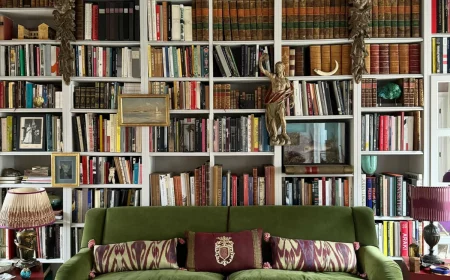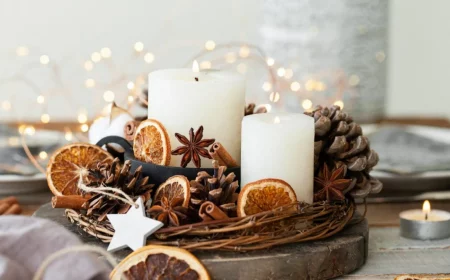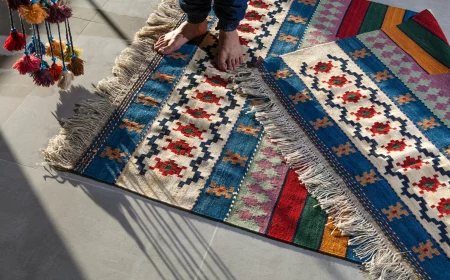The Real-Talk Guide to Seasonal Decor That Doesn’t Look Cluttered
I’ve helped folks make their houses feel like home for a long time, and I’ve seen one mistake pop up more than any other. People treat seasonal decorating like an afterthought. They just pull out a dusty box of stuff and scatter it around. The result? It often looks cluttered, a little random, and totally disconnected from the home’s actual style.
In this article
Let’s be real, the goal isn’t to make your living room look like a store window display. It’s to give your space a gentle nudge, a little wink to the season happening right outside.
Truly great seasonal styling isn’t about buying a mountain of new things every few months. It’s about learning to see your home in a new light. It’s about intentionally layering textures, colors, and natural touches. This guide is built on all the things I’ve learned professionally—including the lessons from my own messy mistakes. We’re going to skip the boring lists and get into the core principles the pros use. You’ll learn how to create a vibe that feels personal, pulled-together, and genuinely connected to the time of year.
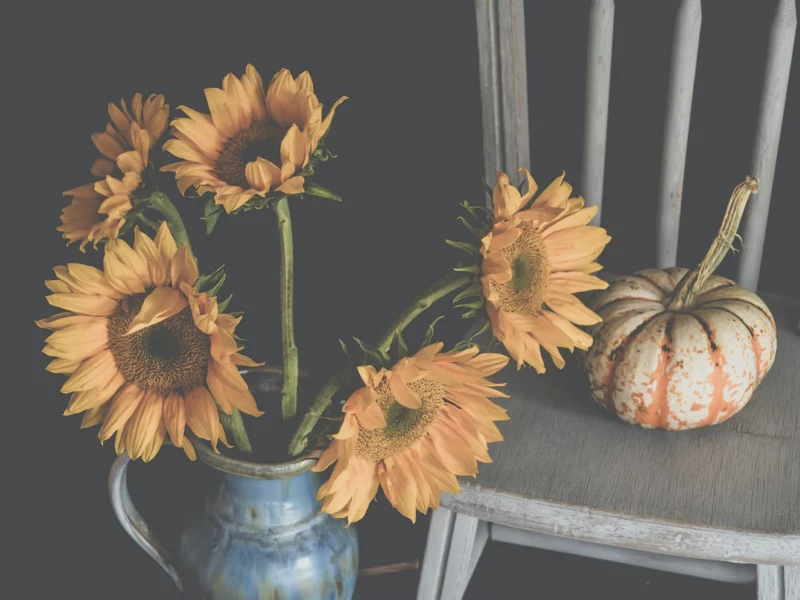
First Things First: Why Does This Stuff Even Work?
Before we even think about touching a pumpkin or a pinecone, let’s talk about the ‘why.’ Good design isn’t random; it’s rooted in how our brains are wired and how light and color work. Once you get these foundations, your choices start to feel way more intuitive. You stop guessing and start actually designing.
Let’s Talk Seasonal Color
Color is, without a doubt, the most powerful tool in your decorating kit. Our reaction to it is instant and emotional. For seasonal styling, we use color to set a very specific mood. In the fall and winter, what do we all crave? Warmth and comfort. So we naturally lean into colors with warm, reddish-yellow undertones. Think terracotta, mustard yellow, deep reds, and rich browns. These colors feel like a crackling fire or a cozy blanket. They make a room feel a bit more enclosed and safe, which is a feeling we subconsciously seek out when it’s chilly outside.
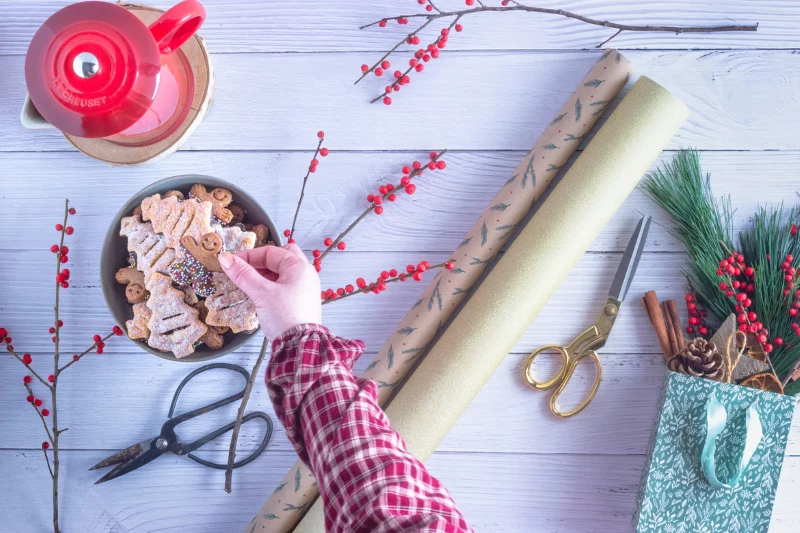
Then, when spring and summer roll around, we want our homes to feel fresh, open, and breezy. This is where colors with blue undertones come into play. We’re talking about leafy greens, sky blues, and soft lavenders. These colors are cooling and calming, creating a sense of expansion that makes a space feel bigger and more connected to the outdoors.
Here’s the key, though: you have to work with your home’s existing color palette, not against it. If your living room is painted a cool gray, throwing a bunch of bright orange pillows on the sofa for fall is going to feel jarring. A much better move would be to lean into colors like a deep navy blue, a rich plum, or even a moody aubergine or forest green. They’re cool-toned but still feel perfectly autumnal.
The Power of Nature (It’s a Real Thing)
You know that little jolt of happiness you get from a vase of fresh flowers? There’s a scientific reason for that, and it’s called biophilia. It’s the idea that we humans have an innate, deep-seated need to connect with nature. When we bring natural elements inside, we’re scratching that itch. It can genuinely lower stress and boost our mood. And honestly, this is the real heart of seasonal decor.
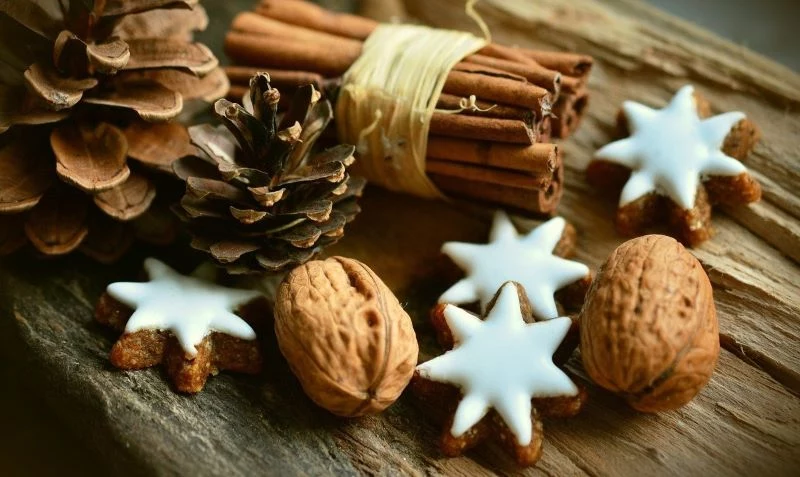
Each season gives us its own unique materials. In spring, you’ve got flowering branches like forsythia or cherry blossoms. Summer is perfect for a big bowl of fresh lemons on the counter or some lush ferns. Autumn, of course, gives us pumpkins, gourds, and colorful leaves. Winter provides pinecones, evergreen boughs, and beautiful bare branches. Using these real, natural items does so much more than just look pretty. It’s a full sensory experience that fake decor just can’t replicate—the rough texture of a pinecone, the scent of fresh pine… you get it.
Working with the Light You’ve Got
The light that streams into your home changes so much throughout the year. Winter light is often weaker, coming in at a low, golden angle. Summer light is bright, direct, and can even feel a bit harsh. Your decor should play off of this. In winter, I love using materials that catch and reflect whatever light we can get. Think a mercury glass vase, a silver tray, or a mirror strategically placed across from a window to bounce light around and make a room feel brighter.
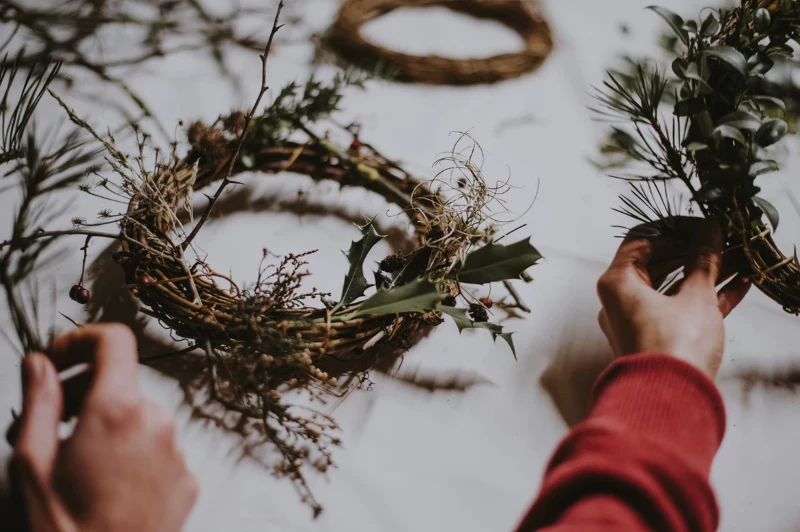
In summer, you might want to do the opposite and diffuse some of that intense sunlight. Lightweight linen curtains are perfect for this; they soften the glare but still let the brightness through. It’s all about paying attention to how the light moves through your space at different times of the year. It’ll tell you exactly where a pop of color or a shiny object will have the biggest impact.
The Pro’s Toolkit: What to Use and Where to Find It
Okay, with the principles down, let’s start building your toolkit. Pros think in terms of palettes—not just for color, but for texture, too. We source things strategically and, most importantly, we know when to stop. Quality and placement will always beat a sheer quantity of stuff.
Building a Go-To “Seasonal Starter Kit”
Instead of buying trendy junk you’ll toss next year, I always advise clients to invest in a few core, high-quality pieces that work for every season. Think of it as your decorating capsule wardrobe. Here’s a great place to start:
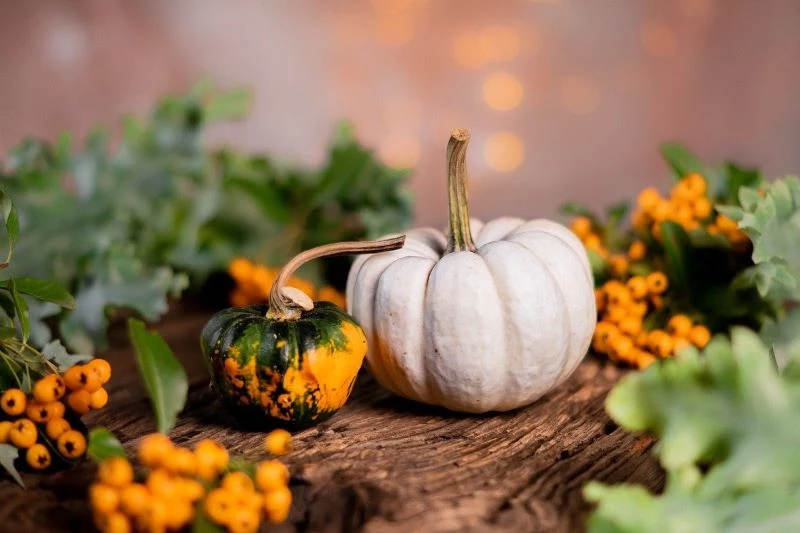
- A Large, Neutral Tray: Something in wood, metal, or a woven material. It’s perfect for corralling items on a coffee table or ottoman. You can find fantastic options for between $20 and $50 at places like Target or HomeGoods.
- A Set of Candlesticks: A trio of simple, elegant candlesticks in brass or matte black adds instant height and sophistication. Expect to spend between $25 and $60 for a good set.
- A High-Quality Throw Blanket: This is where you might want to splurge a little. A beautiful throw in a neutral color like cream, gray, or oatmeal, made from wool or a high-quality cotton, can be used year-round. A good one will run you anywhere from $70 to $150, but it will last forever.
Creating a Rich Texture Palette
Texture is what saves a room from feeling flat and boring. It makes a space feel rich and inviting. When I’m styling for a season, I always aim for a mix of at least three different textures in any little arrangement. Contrast is your best friend here. For autumn, picture a rough, woven basket (texture 1) holding a few smooth, hard gourds (texture 2), with a soft, chunky-knit wool throw draped nearby (texture 3). The mix of rough, smooth, and soft is what makes it so interesting to look at.
Sourcing Materials with a Designer’s Eye
Your local craft store is fine, but don’t let it be your only stop. To get that really authentic look, you need to think outside the box store. Your own backyard or a local park is the number one best source for branches, stones, and pinecones (for free!). Florists and garden centers are obvious goldmines. But here’s my secret weapon: fabric stores. You can get a yard of beautiful wool plaid or soft velvet for $15-$30, and use it as a table runner, drape it over a chair, or even do a no-sew wrap on an existing pillow. It’s high-impact and low-cost.
This is also where the “Splurge vs. Save” mindset comes in. Splurge on that one beautifully crafted ceramic pumpkin from a local artisan on Etsy. It will have way more impact than a dozen cheap plastic ones. Save by foraging for your own branches instead of buying faux stems from a store. It’s all about balance.
The Art of Restraint (a.k.a. When to Stop)
I cannot stress this enough: the most common mistake is simply too much stuff. I had to learn this lesson myself. Early in my career, I styled a client’s mantel for Christmas with so much garland, ribbon, and figurines it looked like a parade float had crashed into the wall. It was… a lot. The client kindly told me, “It’s a bit much.” We took half of it away, and suddenly, you could actually see and appreciate the beautiful things we’d chosen. It was a huge lesson: more is not more.
Here’s a rule to live by: before you add a new seasonal item, take one non-seasonal item away. Adding a bowl of pinecones to the coffee table? Great. Remove the stack of magazines that usually lives there. This creates visual breathing room and makes your seasonal decor feel special, not just like more clutter.
Putting It All Together: Core Techniques
Okay, let’s get to the fun part. These are the hands-on techniques I use on every single project, whether it’s a tiny bookshelf or a massive fireplace mantel.
How to Build a Vignette Like a Pro
A vignette is just a fancy word for a small, curated group of objects that tells a little story. It’s the best way to concentrate your seasonal decor for maximum impact. Plan to spend about 20-30 minutes playing around with this—it’s more art than science!
- Start with a Foundation: Use a tray, a cutting board, or a piece of fabric to define your space. This anchors the whole look. For a fall coffee table, I love using a woven tray (you can find one at Target for around $25).
- Add Height: Your eye needs something tall to draw it upward. This is the job of a vase with tall branches, a pair of candlesticks, or even a picture frame.
- Add Weight: Now, add your main seasonal element. This should be something visually heavy to ground the arrangement. It could be a stack of books with seasonal-colored spines, a bowl filled with ornaments, or a few real gourds from the grocery store (usually just a few dollars).
- Bring in Life: Add something living or that feels alive. A tiny potted plant, a single flower in a bud vase, or even a piece of fruit will add energy and keep the display from feeling like a museum exhibit.
- Layer in the Details: This is the final touch. Add one or two smaller objects that support the theme. A pretty scented candle, a string of wooden beads, or a little brass object. Just don’t overdo it!
Wreath-Making Secrets
A wreath on the front door is classic for a reason. But if you’re making your own, choosing the right base is everything.
A grapevine base is my absolute favorite. It’s super strong, you can reuse it for years, and its rustic look is a huge plus because you can leave parts of it exposed. The only minor downside is that it can be a bit poky to work with, but it’s perfect for creating those natural, airy styles.
Then you have your standard wire bases. These are champs for holding heavy, dense materials—think traditional, lush holiday evergreens. Their strength is their best feature. The main thing to remember is that you’ll need to cover the entire frame, since the wire itself isn’t meant to be part of the final look.
Quick tip: Use floral wire, not just a hot glue gun, to attach your elements. Wrap the wire discreetly around bunches of greenery or pinecone stems and twist it tightly to the frame. Hot glue can fail in the heat or cold. And for the love of all that is holy, treat your natural finds before you bring them inside! I learned this the hard way after a client’s gorgeous pinecone wreath brought a whole colony of tiny spiders into her house. To avoid this, bake pinecones on a foil-lined sheet at 200°F (about 95°C) for 30 minutes. It kills any unwanted guests.
Adapting to Where You Live
I’ve been lucky enough to work on homes all over, from New England to Southern California, and it’s taught me the most important lesson: the best seasonal decor is authentic to its location. What looks amazing in Vermont in October will look totally out of place in the desert.
- For a Coastal Fall: Forget the bright oranges. Think muted colors: the pale tan of dune grass, the gray of driftwood, the deep blues of the stormy ocean. I use woven seagrass baskets and cool-toned pumpkins.
- For a Southwestern Winter: A traditional evergreen garland can look a bit strange against adobe. Instead, try a simple garland of dried chili peppers or silver-dollar eucalyptus. A hand-woven wool blanket with a geometric pattern adds all the warmth you need.
- For a Pacific Northwest Spring: Spring here is all about lush, deep greens. I focus on moss, ferns, and hellebores. The palette is deep greens, whites, and moody purples. A little terrarium with local moss is the perfect centerpiece.
Just look out your window. Use the colors and materials you see right there. It will always be the right answer.
The Boring (But Crucial) Stuff: Safety and Storage
Part of my job is making sure everything is not just pretty, but also safe and sustainable. A beautiful display isn’t worth it if it’s a fire hazard or your nice decor gets ruined in storage.
Seriously, Be Safe
Please take these warnings to heart. They come from seeing some very close calls.
- Fire Safety: My number one concern. Never place candles directly on a flammable surface or near anything that could burn, like dried leaves. Keep at least 12 inches of clearance. I once saw a candle on a mantel ignite a dry garland. Luckily, they caught it in time. For string lights, always check for a UL tag, which means they’ve been safety tested.
- Pest Prevention: That spider-wreath story is real! Always debug your natural finds. A rustic-looking log by the hearth is a lovely idea, but it can also house bugs. Keep firewood outside until you’re ready to burn it.
- Pet and Child Safety: Heads up for pet owners! Many common seasonal plants like mistletoe, holly berries, poinsettias, and lilies are toxic. Keep them well out of reach. If you have curious pets or kids, opt for high-quality faux versions or choose safer alternatives. For example, instead of toxic lilies for summer, a beautiful bouquet of sunflowers, roses, or zinnias is perfectly safe and just as stunning.
Storing Your Stuff Properly
If you invest in good pieces, you want them to last. Don’t just chuck everything in a cardboard box. Use clear plastic bins with lids to protect from moisture and pests. Wrap fragile things individually. And store textiles like blankets in breathable cotton bags—plastic can trap moisture and cause mildew. A cool, dry closet is a much better spot than a hot attic or damp basement.
One Last Thing on Sustainability…
I always encourage people to buy less, but buy better. And by the way, if you’re short on time or budget, here’s the fastest way to signal a new season: change your scents. A new hand soap or candle—think apple spice for fall or fresh linen for spring—is a 5-minute, $10-$15 fix that makes a huge difference and has zero clutter.
It’s Your Home, It’s Your Story
I’ve shared the principles and tricks of the trade, but the most important rule is this: your home should look and feel like you. Don’t feel pressured to copy something you saw online perfectly. Use these ideas as a jumping-off point. Experiment. Play. Find the natural things that you personally think are beautiful.
Trust me, my own early attempts at styling were a hot mess sometimes. It takes practice to develop your eye. Start small, with just one little corner. See how it makes you feel. If it makes you happy when you walk past it, you’re doing it right. The goal isn’t a perfect, magazine-ready house. It’s a comfortable, real space that brings you joy and connects you to the world outside your door.
Inspirational Gallery
The post-season edit is non-negotiable: Before packing anything away, be ruthless. Did that garland spark joy or just add to the visual noise? If you didn’t truly love it this year, you won’t love it next year. Donate or discard it. Storing only your absolute favorites makes unpacking for the next season a delight, not a chore.
- Swap lightweight linen pillow covers for rich velvet or chunky wool.
- Replace a bright floral centerpiece with a wooden bowl of pomegranates or artichokes.
- Change the hand soap in the kitchen and bathroom to a warmer scent, like cedar or spiced pear.
- Switch a thin cotton throw for a heavyweight faux-fur or cashmere-blend blanket.
Love the foraged look but worried about unwanted eight-legged guests?
There’s a simple pro trick. For dry items like pinecones, interesting branches, or seed pods, seal them in a plastic bag and place them in the freezer for at least 48 hours. This will neutralize any tiny critters or eggs. A quick bake on a low oven setting (around 200°F for 30 minutes) also works wonders for drying and sanitizing.
Scent is the most powerful memory trigger. A study from Rockefeller University found that people can remember 35% of what they smell, compared to only 5% of what they see.
This is why simmering a stovetop potpourri (apple peels, a cinnamon stick, and cloves) or using an essential oil diffuser with scents like pine or frankincense can make your home feel more authentically seasonal than any visual decoration.
A single, dramatic branch in a tall ceramic vessel can create a sculptural moment that feels both natural and intentional. Look for interesting shapes in your own yard or invest in ultra-realistic faux stems. The ‘Real Touch’ faux olive or eucalyptus branches from a brand like Afloral are nearly indistinguishable from the real thing and last forever, making them a worthy, clutter-free investment.
Statement Velvet: Offers a touch of luxe and catches the low winter light beautifully, adding depth and richness. Perfect for a single statement pillow or dramatic curtain panels from brands like West Elm or Crate & Barrel.
Chunky Knit: Provides a more rustic, cozy texture. It screams
- It provides year-round texture without looking overtly
For the ultimate cozy season inspiration, look to the Danish concept of ‘Hygge’ (pronounced hoo-gah). It’s not just a style; it’s a feeling of contentment and well-being. Translate it into your home by focusing on layers of soft light—think dimmer switches, floor lamps, and candlelight instead of harsh overheads. Add plush textures, warm mugs for tea or coffee, and create intentional nooks for comfort. It’s the art of creating sanctuary, which is the true heart of seasonal decorating.
Instead of just adding more things, think about what you can take away. Often, creating a seasonal feel is about editing. Pack away the brightly colored art print from the summer and leave the wall blank for a more minimalist, serene winter mood. Swap a busy patterned rug for a simple, neutral jute or wool one. Sometimes, less is more evocative.
The easiest way to make your home *smell* like the season is a simple stovetop potpourri. It fills the air with a natural, complex scent—no artificial fragrances needed. Simply combine in a small saucepan, cover with water, and simmer on low.
- Autumn Vibe: Apple peels, a cinnamon stick, whole cloves, and an orange slice.
- Winter Vibe: Fresh cranberries, a few rosemary sprigs, and a peel of lemon.


